Longtime Brooklynites Reflect on a Changing Brooklyn
In honor of Brownstoner’s Steel Anniversary, we asked a number of longtime Brooklynites — from borough bigwigs to longtime Brownstoner readers, in neighborhoods from Cobble Hill to Flatlands — for their thoughts on how Brooklyn has changed since the site was founded in 2004. Here’s their take on gentrification, Brooklyn’s international reputation, the real estate market, Atlantic Yards…
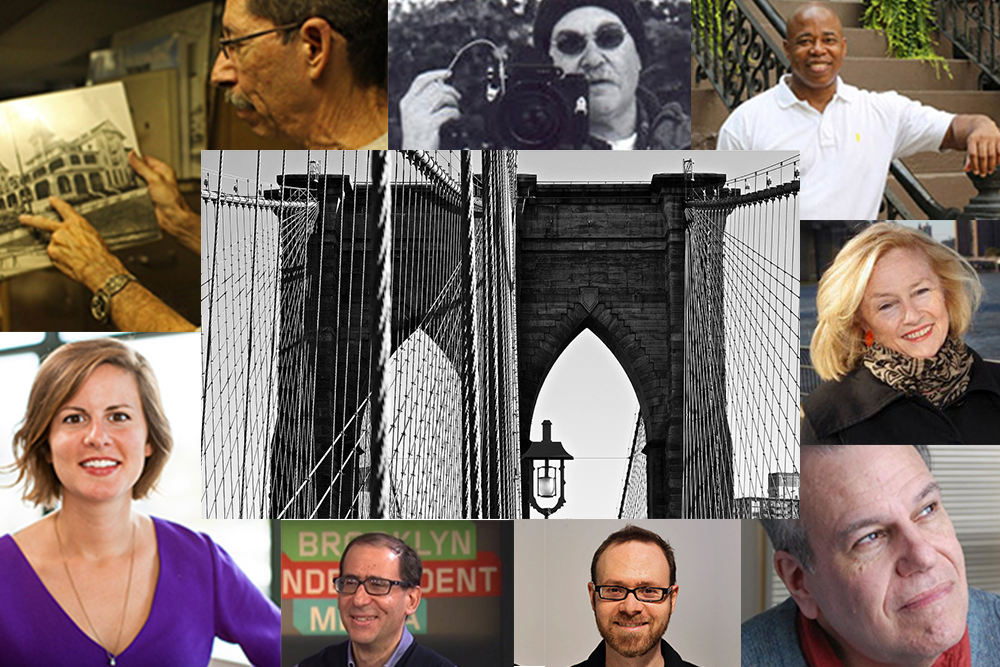
In honor of Brownstoner’s Steel Anniversary, we asked a number of longtime Brooklynites — from borough bigwigs to longtime Brownstoner readers, in neighborhoods from Cobble Hill to Flatlands — for their thoughts on how Brooklyn has changed since the site was founded in 2004.
Here’s their take on gentrification, Brooklyn’s international reputation, the real estate market, Atlantic Yards and more.
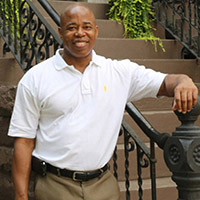 Eric Adams, Brooklyn Borough President
Eric Adams, Brooklyn Borough President
Time in Brooklyn: I was born in Brownsville and have lived in Brooklyn all of my adult life. Currently, I split my time living in Prospect Heights and Bedford-Stuyvesant.
How Brooklyn Has Changed Since 2004: What has changed is that the secret is out on Brooklyn, and people from Manhattan to Mumbai are coming to be a part of our borough’s experience. The global attraction to our borough has further enriched our diversity while presenting new challenges we must face on ensuring we remain an affordable place to raise healthy children and families.
—
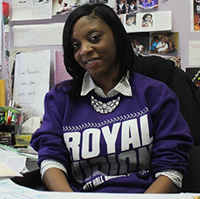 Nadia Lopez, Principal at Mott Hall Bridges Academy in Brownsville
Nadia Lopez, Principal at Mott Hall Bridges Academy in Brownsville
Time in Brooklyn: I have lived in Crown Heights, Brooklyn all of my life!
How Brooklyn Has Changed Since 2004: The most obvious changes in Brooklyn, specifically Brooklyn North (Fort Greene, Clinton Hills, Bedford Stuyvesant, Prospect Heights, Crown Heights, Bushwick and Williamsburg) have been the demographics. Communities that were predominantly of color have now become gentrified and what was once considered the most dangerous borough in NYC has become the coolest, most expensive, sought-after place to live. In 2004 you rent a two-bedroom apartment for $800; now the average price is $2100.
—
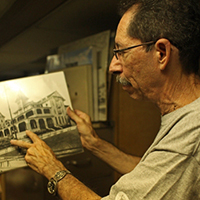 Ron Schweiger, Brooklyn Borough Historian
Ron Schweiger, Brooklyn Borough Historian
Time in Brooklyn: I have lived in Brooklyn my entire life. I’m now 70. I grew up in Gravesend. When I got married in 1969, my wife and I lived in Victorian Flatbush from 1969-86. In 1986 we moved to Flatlands where we still live today.
How Brooklyn Has Changed Since 2004: About three years ago, a good friend of mine and his wife were vacationing in France. As they walked along a commercial street in Paris, his wife spotted three mannequins in a store window. Each had on its head a woolen hat. One of the hats had the word PARIS, the second hat had LONDON, and the third, BROOKLYN. His wife wanted the Brooklyn hat. My friend told her he could get the hat for her back in Brooklyn. She insisted that she wanted to buy it in Paris. When they went into the store there were a pile of the PARIS hats and the LONDON hats. When they asked the clerk about the location of the Brooklyn hats, the clerk responded, “They’re sold out!”
Also: The real estate market in Brooklyn has skyrocketed. That is good and not so good. People that have lived in certain neighborhoods for many years often cannot pay the escalating rents and prices to buy homes.
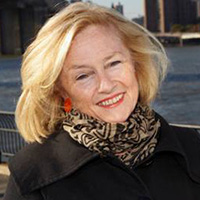 J. Jean Austin, Principal Broker and Owner at Brooklyn Bridge Realty
J. Jean Austin, Principal Broker and Owner at Brooklyn Bridge Realty
Time in Brooklyn: I moved to Greenpoint in 1983. Now I’m in Cobble Hill.
How Brooklyn Has Changed Since 2004: I think the real change in the market is the expansion of the territory. What’s happened since 2004 that’s been the most amazing is what’s happened in Clinton Hill, in Williamsburg, in Crown Heights. Now is [also] the beginning of big retail coming to Cobble Hill and Carroll Gardens. It’s distressing to see a lot of the older businesses go out of business, but there’s also new, exciting retail coming in. Also, more brokers joined the Real Estate Board of New York, and co-broking has come into its own in that 11 years, which helped the momentum.
—
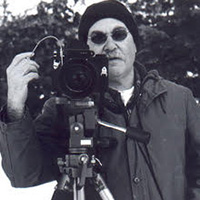 Bob Marvin, longtime Brownstoner reader
Bob Marvin, longtime Brownstoner reader
Time in Brooklyn: I’ve lived in Brooklyn for 45 years; four years in Park Slope, in rental brownstone apartments, and Prospect Lefferts Gardens/Lefferts Manor since buying my house in 1974.
How Brooklyn Has Changed Since 2004: When you’ve lived in Brooklyn as long as I have 2004 seems to be just a moment ago, but the biggest difference between then and now is, I think, that Brooklyn has gone from being an attractive, albeit second-best, alternative to Manhattan to being perceived as a standalone entity, superior to “thee City” in many ways.
In my own neighborhood (PLG), the biggest change is directly related to the enhanced status of Brooklyn. The blocks of historic houses in Prospect Lefferts Gardens have always been solidly middle class and have neither “needed” nor been susceptible to “gentrification” but the surrounding apartment buildings have become attractive to young people and have been gentrified in recent years providing the customer base for many new restaurants and other attractive businesses. These were lacking for many years because the historic district consists largely of single-family houses and the long-term middle-class population there wasn’t large enough to have much of an impact on the commercial streets.
—
 Rachael Stollar, Designer & Marketing Coordinator at CWB Architects
Rachael Stollar, Designer & Marketing Coordinator at CWB Architects
Time in Brooklyn: Previously two years in Brooklyn Heights as a renter and now going on three years in Cobble Hill as an apartment owner
How Brooklyn Has Changed Since 2004: The biggest change I’ve seen in my neighborhood is the influx of visitors to Brooklyn Bridge Park on any given day. As a runner, I traverse the park almost everyday and it seemed like overnight people figured out what a great place it is to be. I still remember the first time I visited a friend at their Brooklyn apartment while I was a living in the east village and was immediately thinking, how can I move over here? That was in 2011, before that, I wouldn’t even have considered moving to Brooklyn and I doubt I was the only one. I got a job in Dumbo in February that year and found an apartment in May. Since then, Brooklyn has just kept growing in popularity. It really has the best of both worlds, city density with tight-knit neighborhood communities. Its because of the people who really care about the place they live and understand what makes it work.
—
 Andrew Porter, longtime Brownstoner reader
Andrew Porter, longtime Brownstoner reader
Time in Brooklyn: I’ve lived in Brooklyn Heights since 1968, all 47 years on the same street.
How Brooklyn Has Changed Since 2004: This area has changed from middle class, full of longshoremen and office workers, to an upper-class, upper-crust area. It’s thick with nannies, Brits, and people who buy old houses and gut them, in many cases restoring old stoops but modernizing the interiors. They lose the character they had under previous owners, if with better heating and cooling, more electrical outlets and kitchens with granite counter tops and hotel-sized stoves and refrigerators.
In the last few years, Brooklyn Bridge Park has finally come to fruition, but it has brought hordes of tourists to formerly isolated areas, the area awash in tourists. Our streets are now inundated with passersby. Our views of Manhattan and the Brooklyn Bridge are subject to new construction which violates what we all perceived to be forever views, but which are apparently subject to the whims of real estate moguls. Not all change is progress.
—
 Jordan Parnass, AIA Certified Passive House Designer
Jordan Parnass, AIA Certified Passive House Designer
Time in Brooklyn: I’ve been in Brooklyn since 1999, when I moved to Dumbo from Chelsea. I still have my office on Jay Street but my family has called Boerum Hill home since 2005.
How Brooklyn Has Changed Since 2004: In general, we’ve seen the extremely rapid gentrification of almost every neighborhood within a 20-minute subway ride of lower Manhattan. Brooklyn has gone from a second choice for renters priced out of the Manhattan market to a primary destination for families, creatives, academics and pretty much anyone else not working in finance.
Brooklyn is a large borough and it’s important to realize that while many of us focus our attention on the historic brownstone neighborhoods, these are far outnumbered by other areas. The increase in income inequality and lack of investment in underserved communities is the dark side of the Brooklyn Renaissance.
—
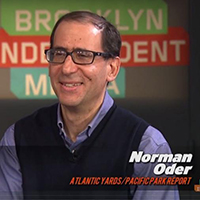 Norman Oder, Atlantic Yards Report
Norman Oder, Atlantic Yards Report
Time in Brooklyn: Outside five years in Flatbush in my childhood, I’ve lived in Brooklyn since 1991: Carroll Gardens, Park Slope, Ditmas Park, Kensington.
How Brooklyn Has Changed Since 2004: In 2004, Atlantic Yards (16 towers + arena), developed by Forest City Ratner, was supposed to start soon and take 10 years. In 2015, the project, renamed Pacific Park Brooklyn, is now supposed to be done by 2025. In 2004, the four towers around the arena were supposed to hold 10,000 jobs; today, three of the towers will contain apartments, while the office tower (obliterating the temporary plaza) is on hold. In 2004, the Atlantic Yards project was to include 4,500 rental apartments, including 2,250 below-market “affordable” units; today, there are 1,930 condos added, with 200 of them below market (and many of the affordable rentals are less affordable than promised). Today, nearly all of the Pacific Park Brooklyn, excepting the Barclays Center and one tower, is 70 percent owned by Greenland Holdings, controlled by the government of Shanghai. The Brooklyn Nets are 80 percent owned by Russian oligarch Mikhail Prokhorov, who owns 45 percent of the arena operating company and may soon buy Forest City’s remaining stakes in both. I wonder: could the city and state have justified the significant public assistance — direct subsidies, tax breaks, eminent domain — if the current beneficiaries had been asking?
[Photos: Ron Schweiger photo by Stephen Nessen for WNYC; Nadia Lopez photo by Rachel Holliday Smith for DNAinfo; Brooklyn Bridge photo by Olivia Boddie]





I always answer……when wasn’t it changing and what place doesn’t change. It is a constant process.